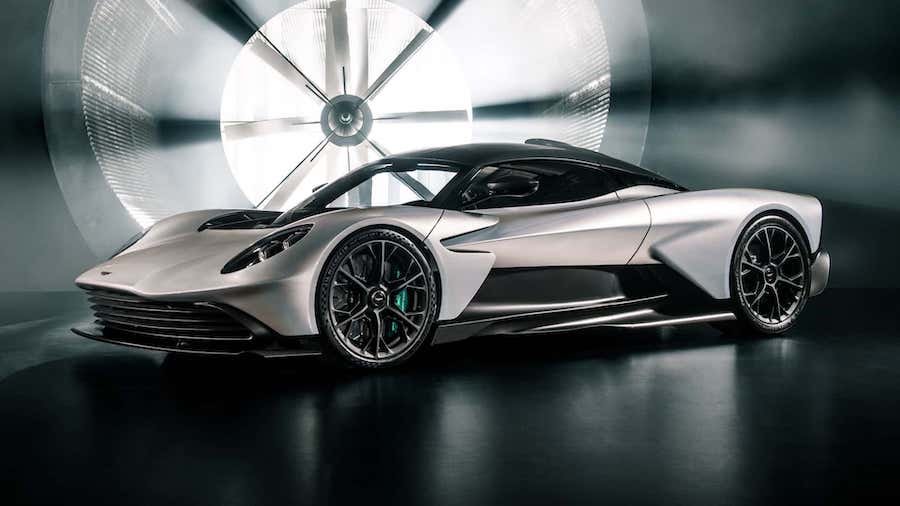Aston Martin Valhalla Inches Towards 2024 Production With Help From F1

It's been a long road for the Aston Martin Valhalla, but it's a road that has light at the end of the tunnel. We've seen the exterior, the interior, and we know about its V8 hybrid powertrain. Now Aston Martin is sharing a bit more about the Valhalla's development process. And it probably comes as no surprise that the company's Formula 1 experience is well and truly exercised throughout the mid-engine carbon fiber supercar.
"It is a great advantage for a car manufacturer to have access to the unique skills and knowledge of a Formula 1 team," said Claudio Santoni, Aston Martin Performance Technologies engineering director. "F1 engineers are constantly pushing the boundaries in the pursuit of performance and have developed rapid problem-solving tools. With this knowledge ‘in-house’ we can seamlessly bring F1 expertise to road car development.”
What exactly does that mean? For Valhalla, it starts with simulations. The company says a full 90 percent of Valhalla's dynamic characteristics and set-up is all simulation, with just 10 percent coming from practical testing. That certainly tracks with the car's lengthy development time – it was first announced way back in 2019 as a hybrid V6, then upgraded to a hybrid V8 in 2021, and as of now, a road-going version still isn't, well, on the road. That will soon change, as Aston Martin says a Valhalla will be operating by the end of the year.
Aerodynamics account for a significant portion of the simulation, and F1 experience again serves as the foundation. The design of the underbody is key, as that's where a majority of the downforce will come from. Combined with fully active aero features – something not allowed in F1 – Aston Martin says the Valhalla will have over 1,322 pounds (600 kilograms) of downforce at 149 mph. It will utilize active wings at both the front and rear similar to the AMR23 race car, as well as small louvers in front of the rear wheels that pull air from beneath the car, effectively sucking it to the ground.
A video from 2022 showed us Aston Martin's interior design process, and now we learn that F1 influence is here as well. The company builds a false floor for the driver, so heels are raised while the carbon bucket seats are reclined. The goal is to create a performance-oriented driving position while still maintaining comfort. It's something we're surely interested to check out ourselves, as F1 cars aren't necessarily known for being comfortable.
F1 cars are known for being fast, and on that front, the Valhalla shouldn't disappoint. You already know about the twin-turbocharged 4.0-liter V8, built specifically for this car with a flat-plane crank design. You also know about the three electric motors working with it – two at the front and one integrated into the transmission. Aston Martin now says the combo makes 997 horsepower, which is a bit more than last we heard.
The electric motors up front will allow torque vectoring to be possible, and here's an interesting tidbit. To save weight, there's no reverse gear in the transmission. Those front motors will handle reversing duties, and that raises the possibility of hilarious front-wheel-drive donuts in what will be a very rare, very expensive supercar.
"The knowledge and experience of the AMF1 team personnel at Aston Martin Performance Technologies combined with the skills and know-how of our road car development teams has enabled us to bring direct F1 learnings to sportscar development," said Carlo Della Casa, Aston Martin product development director. "Our target for Valhalla is to produce a supercar that will set best-in-class standards for performance, dynamics, and driving pleasure."
999 Valhallas are slated for production, and if things stay on schedule, that will commence next year.




Related News


